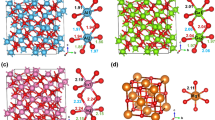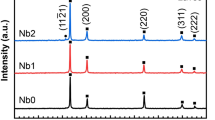Abstract
Understanding the factors influencing the surface properties and corrosion tendencies of iron is a step toward corrosion insights and prevention. The effect of sulfur impurities on the surface properties of Fe (100) has been investigated at monolayer (1 ML) concentration. The structural, electronic, optical and magnetic properties of the Fe (100) surface have been investigated using the spin polarized-density functional theory method. The results indicate that at 1 ML, sulfur migration and grain boundary formation on iron is most favored. However, iron absorption and deposition are both thermodynamically favored. S at the sub-surface causing pitting due to the preferred lower coordination of sulfur compared to iron at the subsurface sites. This phenomenon could explain the exposure of more bulk iron atoms and pit corrosion experienced as a result of the presence of sulfur in steel. Sulfur is seen to act as a corrosion promoter (an electronegative species) as it lowers the work function of Fe (100), making the surface more electropositive. S lowers the magnetic properties of iron, providing an antimagnetic spin to iron. The projected density of states plot shows the localization of electronic states below the Fermi level and the lowering of the conductivity of iron. The magnetic effect of iron is reduced in the presence of sulfur impurity as well as its corrosion resistance which is undesirable. Trapping S, however, at the bulk site under 4 coordination constraints, where sulfur is immobile could help reduce corrosion of the (100), the predominant face of iron crystals, as the work function of Fe (100) increases by 0.58 eV.




Similar content being viewed by others
References
Nagu M, Abdulhadi A, Huwaiji A, Alanazi NM (2018) Effect of elemental sulfur on pitting corrosion of steels. Insights Anal Electrochem 4:1–7. https://doi.org/10.21767/2470-9867.100030
MacDonald DD, Roberts B, Hyne JB (1978) The corrosion of carbon steel by wet elemental sulphur. Corros Sci 18:411–425
Fang H, Young D, Nesic S (2008) Corrosion of mild steel in the prescence of elemental sulfur. Corrosion, pp 1–14. https://onepetro.org/NACECORR/proceedings-abstract/CORR08/All-CORR08/NACE-08637/119135
Schmitt G (1991) Effect of elemental sulfur on corrosion in sour gas systems. Corrosion 47:285–308. https://doi.org/10.5006/1.3585257
Fang H, Young D, Nesic S (2009) Elemental sulfur corrosion of mild steel at high concentrations of sodium chloride. http://www.icmt.ohio.edu/documents/publications/8211.pdf
May M, Gonzalez S, Illas F (2008) A systematic density functional study of ordered sulfur overlayers on Cu (1 1 1) and Ag (1 1 1): influence of the adsorbate coverage. Surf Sci 602:906–913. https://doi.org/10.1016/j.susc.2007.12.028
Ma SH, Jiao ZY, Yang ZX (2010) Surface science coverage effects on the adsorption of sulfur on Co (0 0 0 1): a DFT study. Surf Sci 604:817–823. https://doi.org/10.1016/j.susc.2010.02.006
Spencer MJS, Snook IK, Yarovsky I (2005) Coverage-dependent adsorption of atomic sulfur on Fe(110): a DFT study. J Phys Chem B. https://doi.org/10.1021/jp044378l
Cao W (2009) Adsorption of surface active elements on the iron (100) surface (2009). https://www.diva-portal.org/smash/get/diva2:246103/FULLTEXT04.pdf
Giannozzi P, Baroni S, Bonini N et al (2009) QUANTUM ESPRESSO: a modular and open-source software project for quantum simulations of materials. J Phys Condens Matter 21:395502. https://doi.org/10.1088/0953-8984/21/39/395502
Kohn W, Sham LJ (1965) Self-consistent equations including exchange and correlation effects. Phys Rev. https://doi.org/10.1103/PhysRev.140.A1133
Perdew J, Burke K, Ernzerhof M (1996) Generalized gradient approximation made simple. Phys Rev Lett 77:3865–3868. https://doi.org/10.1103/PhysRevLett.77.3865
Pack JD, Monkhorst HJ (1977) “Special points for Brillouin-zone integrations”—a reply. Phys Rev B 16:1748–1749
Kwawu CR, Tia R, Adei E et al (2017) Effect of nickel monolayer deposition on the structural and electronic properties of the low miller Indices of (bcc) iron: a DFT study. Appl Surf Sci 400:293–303. https://doi.org/10.1016/j.apsusc.2016.12.187
Kokalj A (1999) XCrySDen—a new program for displaying crystalline structures and electron densities. J Mol Graph Model 17:176–179. https://doi.org/10.1016/S1093-3263(99)00028-5
Kwawu CR, Tia R, Adei E et al (2017) CO2 activation and dissociation on the low miller index surfaces of pure and Ni-coated iron metal: A DFT study. Phys Chem Chem Phys 19:19478–19486. https://doi.org/10.1039/c7cp03466k
Kwawu CR, Aniagyei A, Konadu D et al (2022) First-principles DFT insights into the mechanisms of CO2 reduction to CO on Fe (100)-Ni bimetals. Theor Chem Acc 141:1–7. https://doi.org/10.1007/S00214-022-02879-5
Kwawu CR, Aniagyei A, Konadu D, Antwi BY (2021) Mechanisms of CO2 reduction into CO and formic acid on Fe (100): a DFT study. Mater Renew Sustain Energy 10:9. https://doi.org/10.1007/s40243-021-00194-w
Crisan O, Crisan AD (2011) Phase transformation and exchange bias effects in mechanically alloyed Fe/magnetite powders. J Alloys Compd 509:6522–6527. https://doi.org/10.1016/j.jallcom.2011.03.147
Jain A, Ong SP, Hautier G et al (2013) Commentary: the materials project: a materials genome approach to accelerating materials innovation. APL Mater 1:011002. https://doi.org/10.1063/1.4812323
Błoński P, Kiejna A (2007) Structural, electronic, and magnetic properties of bcc iron surfaces. Surf Sci 601:123–133. https://doi.org/10.1016/j.susc.2006.09.013
Aldén M, Skriver HL, Mirbt S, Johansson B (1994) Surface energy and magnetism of the 3d metals. Surf Sci 315:157–172. https://doi.org/10.1016/0039-6028(94)90551-7
Acknowledgements
This work was carried out with the aid of grants from the UNESCO-TWAS and the Swedish International Development Cooperation Agency (Sida). The views expressed herein do not necessarily represent those of UNESCO-TWAS, Sida or its Board of Governors. CRK is grateful for the individual and collaboration grants from The World Academy of Sciences (TWAS) and Swedish International Development Cooperation Agency (SIDA); grants 18-032 RG/CHE/AF/AC_I and 22-004 RG/PHYS-CHE/AF/AC_CG. CRK acknowledges the UK’s Royal Society and Leverhulme Trust for the Royal Society-Leverhulme Africa Postdoctoral Fellowship Award Scheme (LAF\R1\180013). All authors acknowledge the Center for High Performance Computing (CHPC), South Africa for computing resources.
Author information
Authors and Affiliations
Contributions
Data were collected and the manuscript written by Mr. ED and Miss. AKA. Research concept was developed by Dr. CRK. Work was supervised by Dr. CRK, Prof. EA and Dr. EM. Manuscript was revised by Dr. CRK.
Corresponding author
Ethics declarations
Conflict of interest
The authors declare no competing interests.
Additional information
Publisher's Note
Springer Nature remains neutral with regard to jurisdictional claims in published maps and institutional affiliations.
Rights and permissions
Springer Nature or its licensor (e.g. a society or other partner) holds exclusive rights to this article under a publishing agreement with the author(s) or other rightsholder(s); author self-archiving of the accepted manuscript version of this article is solely governed by the terms of such publishing agreement and applicable law.
About this article
Cite this article
Dumba, E., Kwawu, C.R., Agyemang, A.K. et al. DFT studies of the effect of sulfur impurities on the structural, electronic and magnetic properties of iron (100). Theor Chem Acc 142, 14 (2023). https://doi.org/10.1007/s00214-022-02945-y
Received:
Accepted:
Published:
DOI: https://doi.org/10.1007/s00214-022-02945-y




